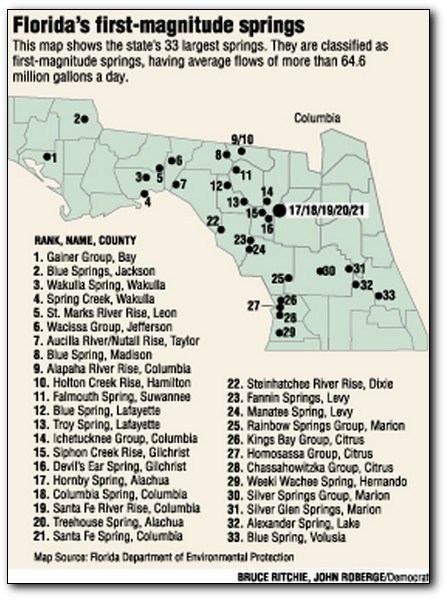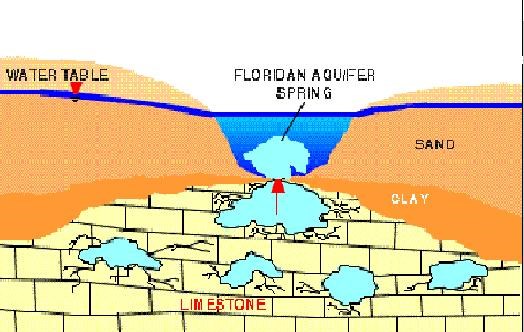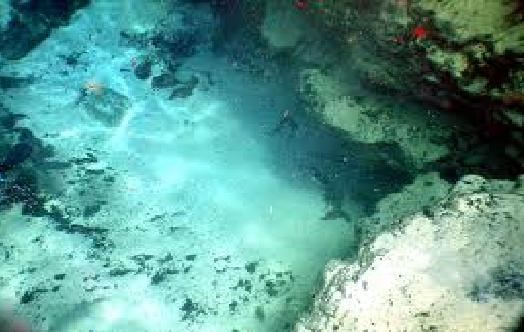NOTE: This is an earthcache, there is no physical container to find at the coordinates. To get your smiley for the cache, e-mail your answers for the questions below to the cache owner.
This earthcache is located with permission from Alexander Springs Recreation area. There is an entry fee to access the park, please see the related web page on the cache page for updated times and fees. This is a perfect spot to visit and take a break from a hot day of caching. It is not a requirement for this cache but if you would like to see the inside of the beautiful spring bring your suit, goggles, and maybe a flotation device.
Florida has more first magnitude springs than any other State or Nation in the whole world!
What is a first magnitude spring?
One of the ways springs are classified is the amount of water they discharge. The largest springs are "first-magnitude," meaning they discharge at least 100 cubic feet of water per second, or about 64.6 million gallons per day. There are currently as of Aug 2013, 33 identified first magnitude springs in Florida.

These Springs were formed in layers of thick Florida limestone. The limestone was made from compressed coral reefs and shells but we rarely see it now due to the sand and clay on top of the limestone. As acidic rain dissolved cracks and tunnels into the porous limestone, caves and underground channels were formed over time. This dissolving gave the limestone a swiss cheese appearance. As a result the limestone became like an huge rock sponge filled with fresh water. This store of underground water is known as an aquifer.

Alexander Springs is a first-magnitude spring that flows from multiple vents in a tight cluster found in the limestone below the water. A vertical ledge that runs North and South of the vents can be seen while swimming above the spring source as well as a small cave.

The spring water after leaving the pool area flows approximately 10 miles through Alexander Springs Creek until it empties into the St. Johns River. The age of water coming from Alexander Springs is determined by measuring the concentration of tritium, delta carbon-13, carbon-14, and helium-3 from the springs discharge. Due to these measurements it is estimated that the water flowing from Alexander Springs is between 25 to 42 years old. However, when compared to the age of the spring itself (over a million years), the water is rather young.
To get credit for the cache, please answer the questions below. When answering the questions do your best. It is more important that you learn a new concept about our earth and can apply your knowledge, rather than have a precise answer.
1- What is the temperature of the water and the color, composition, and smell of the soil in the water near the coordinates?
2- What is the depth of the water near the coordinates?
3- Identify where the source of the spring is and classify its flow like water cooking on a stove (no boil, simmering, slow boil, or fast boil).
4- What do you think the depth of the water is at the source of the spring?
5- Why do you think the water in Alexander Springs appears to be different colors?
Thank you for visiting this earthcache. Please send your answers to the above questions to the cache owner. In your "found it" log feel free to write about your experience, but don't include the earthcache answers. Thanks and we hope you enjoy beautiful Alexander Springs!

Sources:
www.sjrwmd.com/springs/alexander.html
http://www.fs.usda.gov/recarea/ocala/recreation/bicycling/recarea/?recid=32209&actid=79
http://apalacheehills.com/springs/Springbook/FirstMagnitude.htm